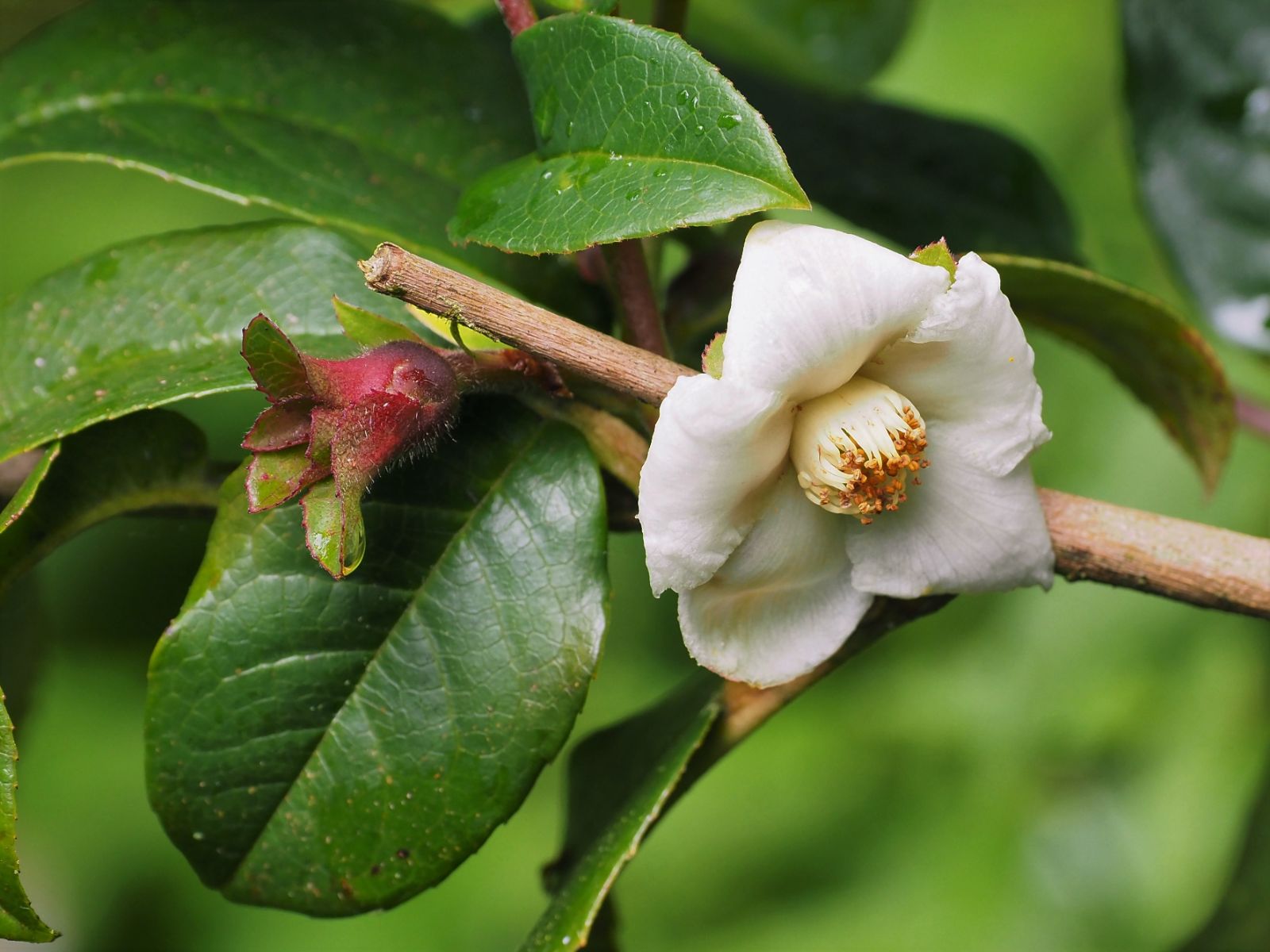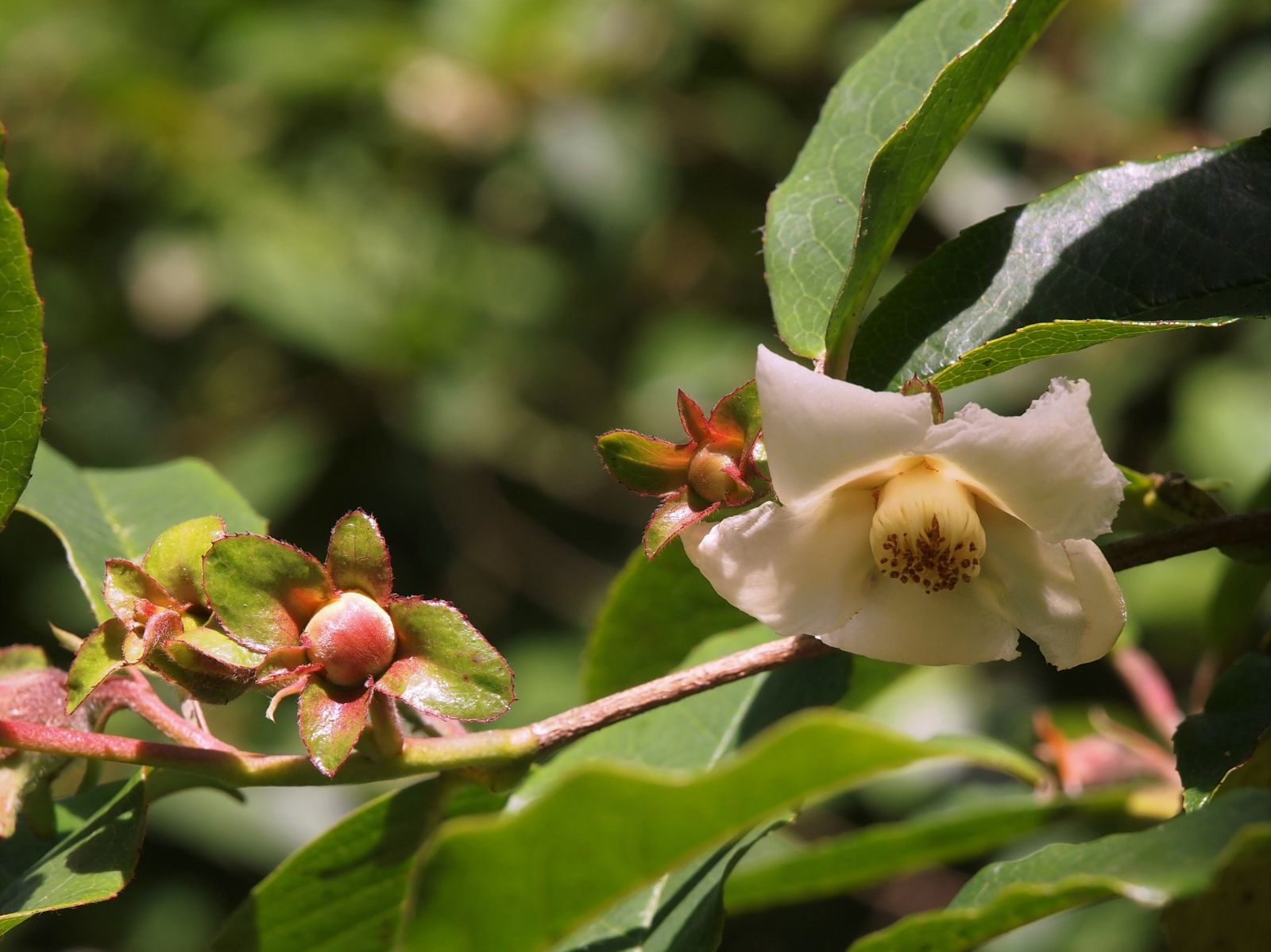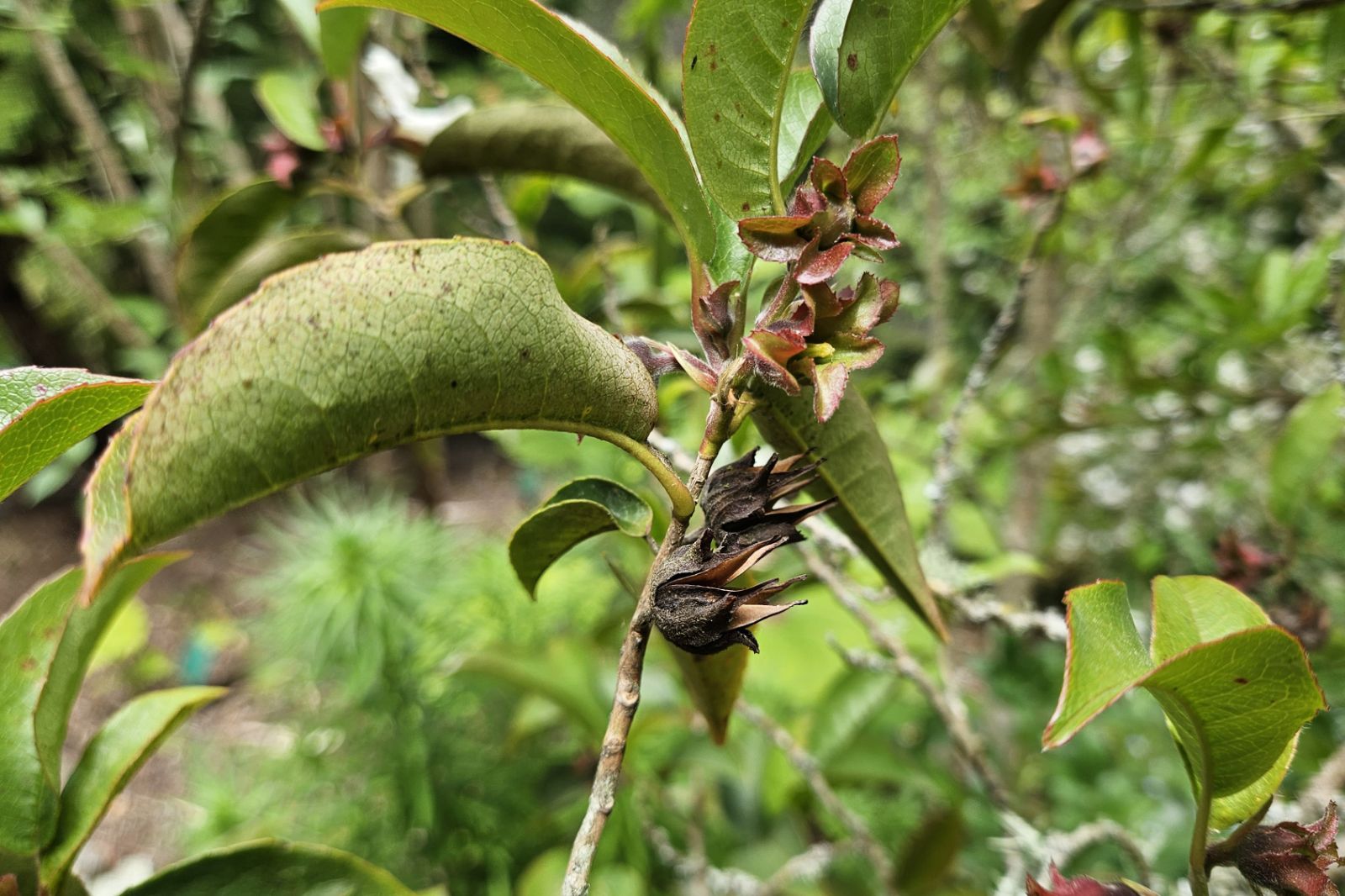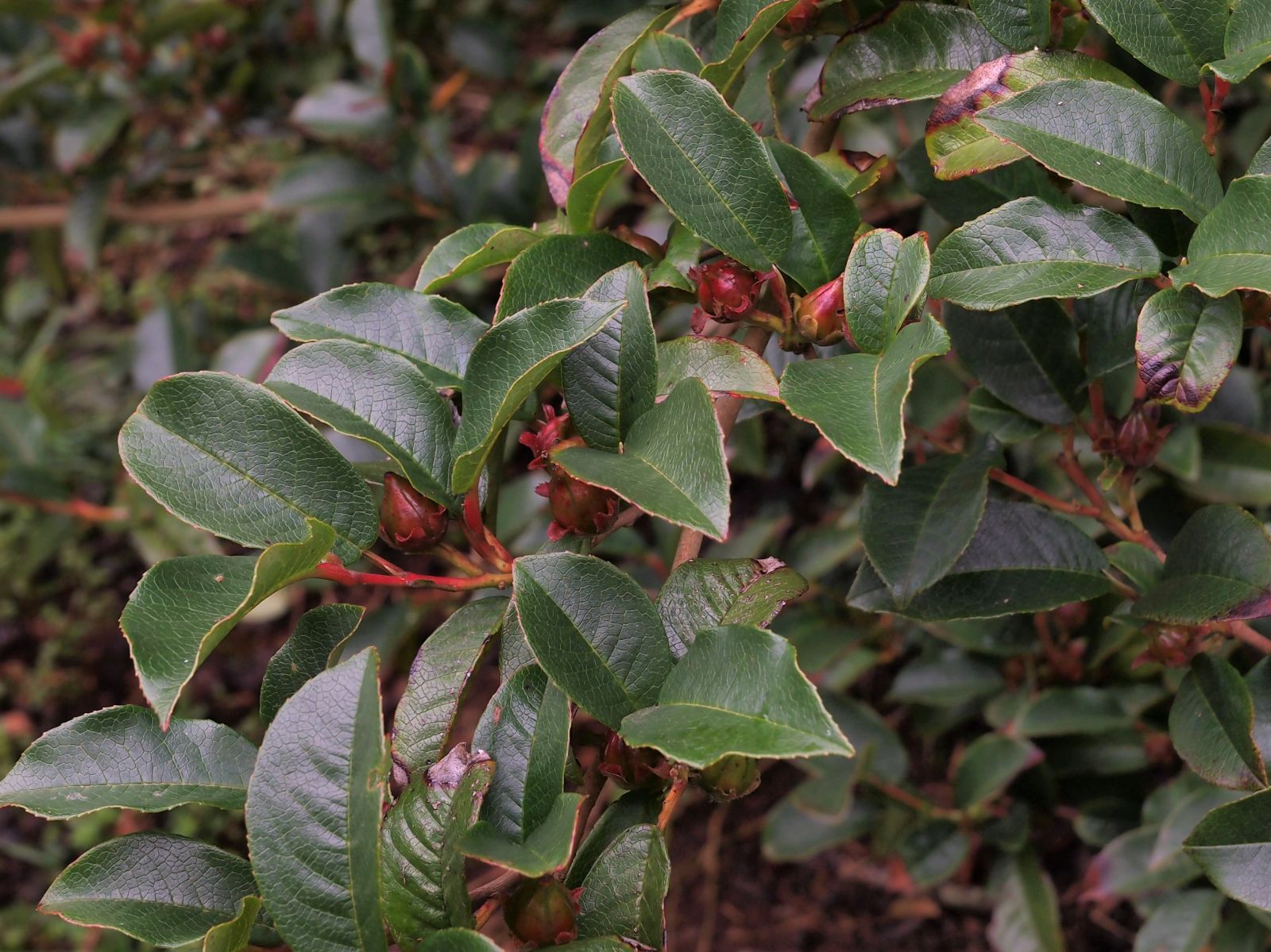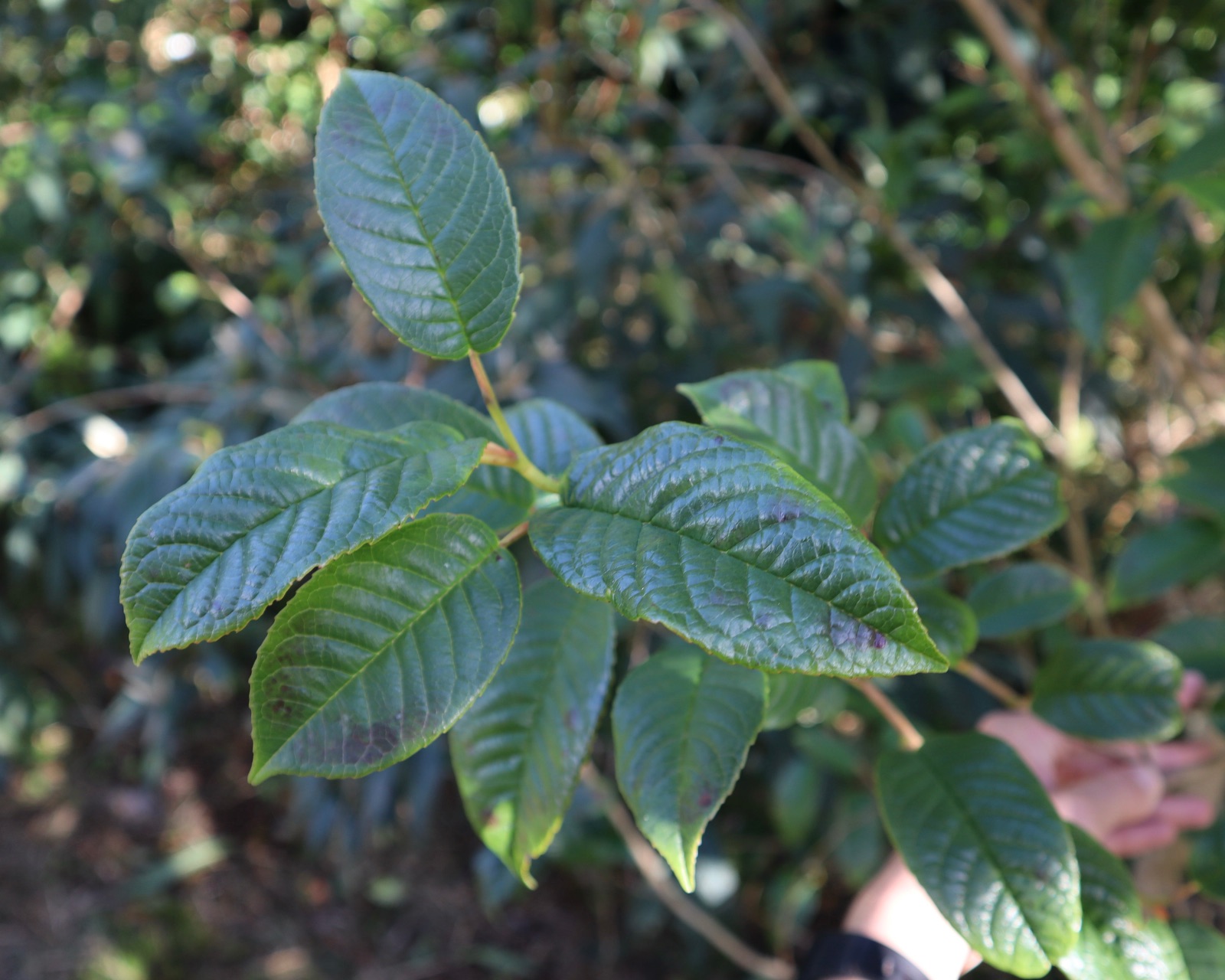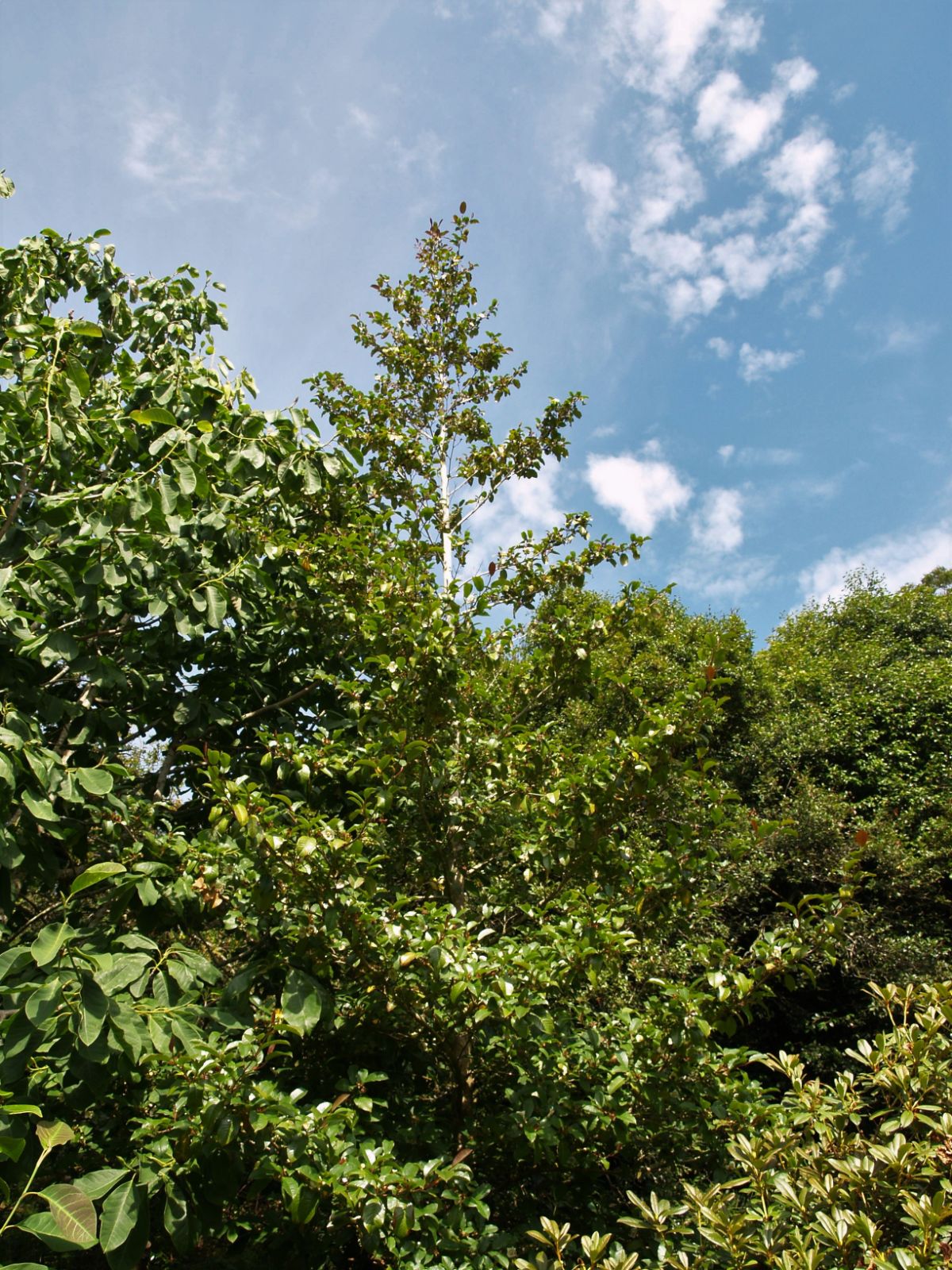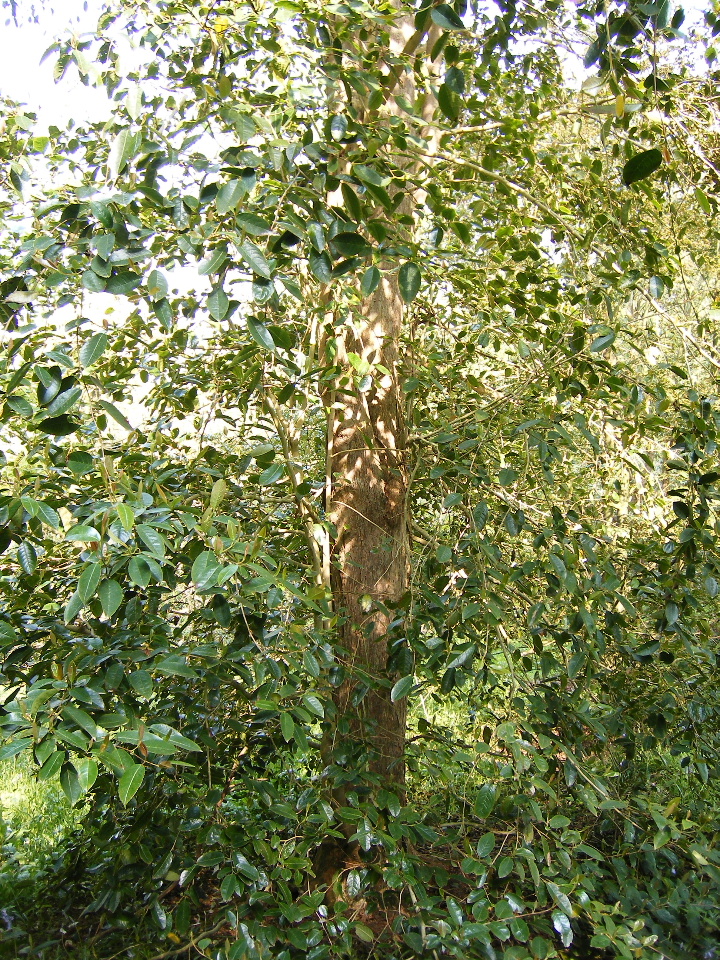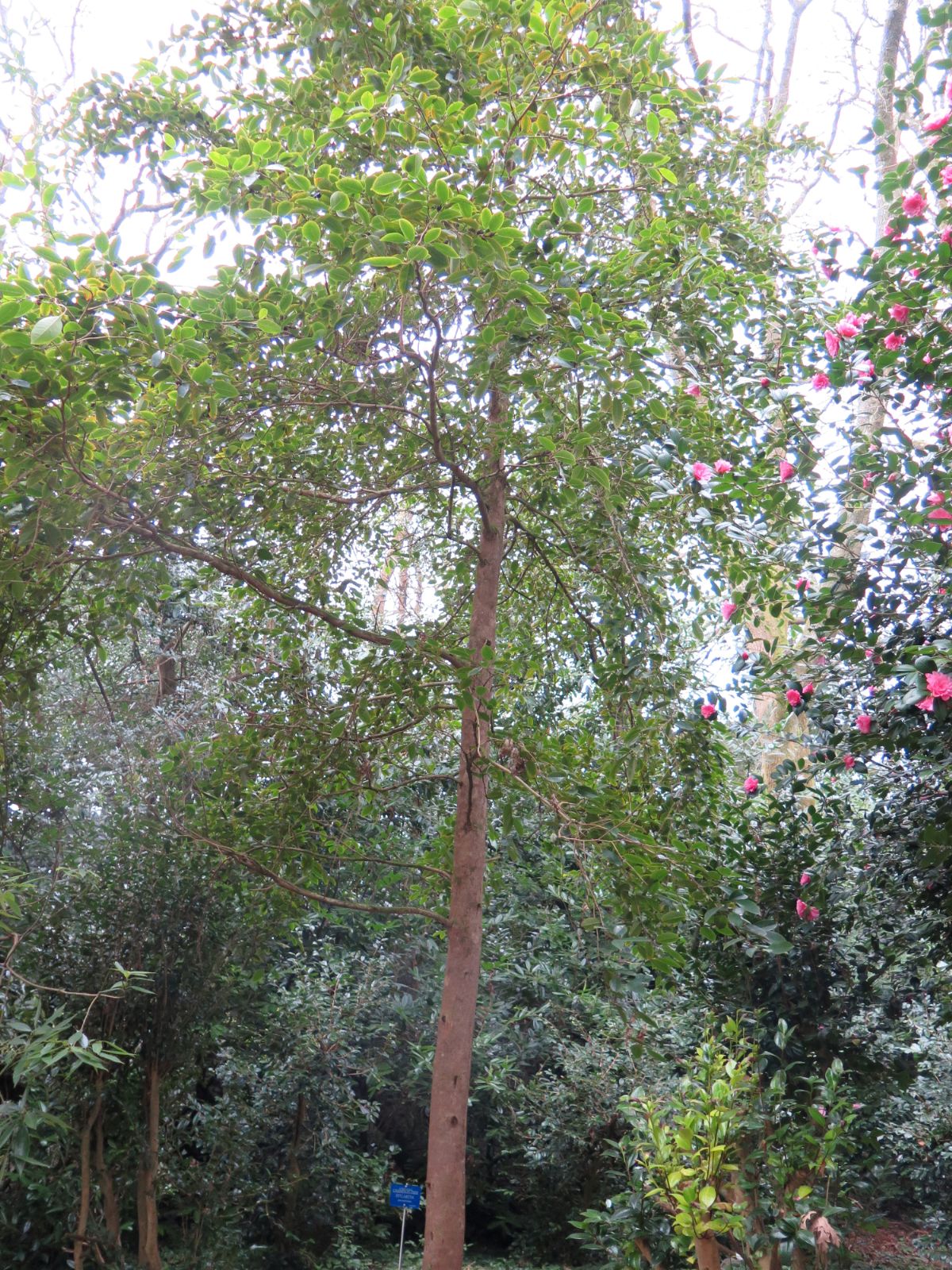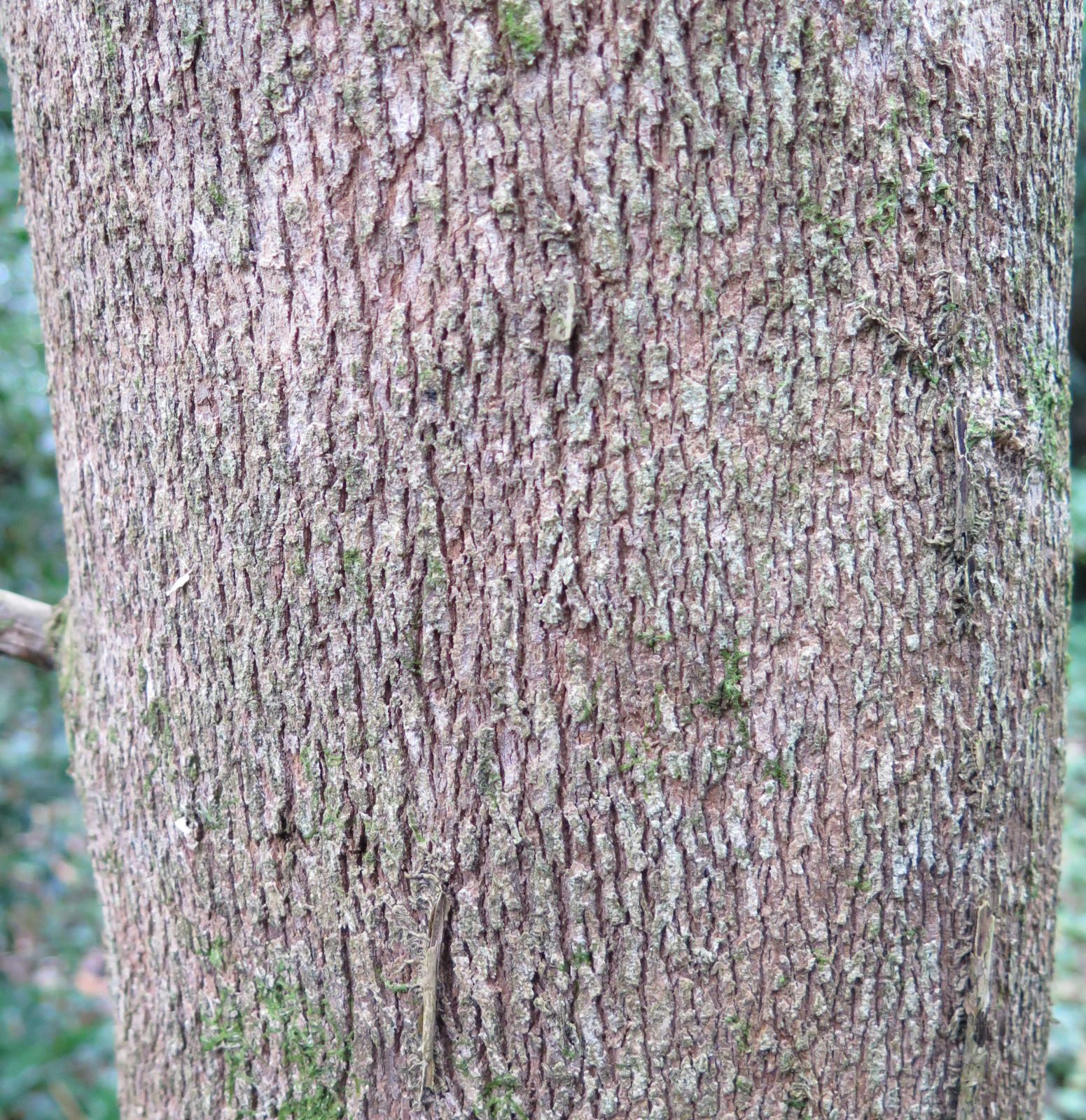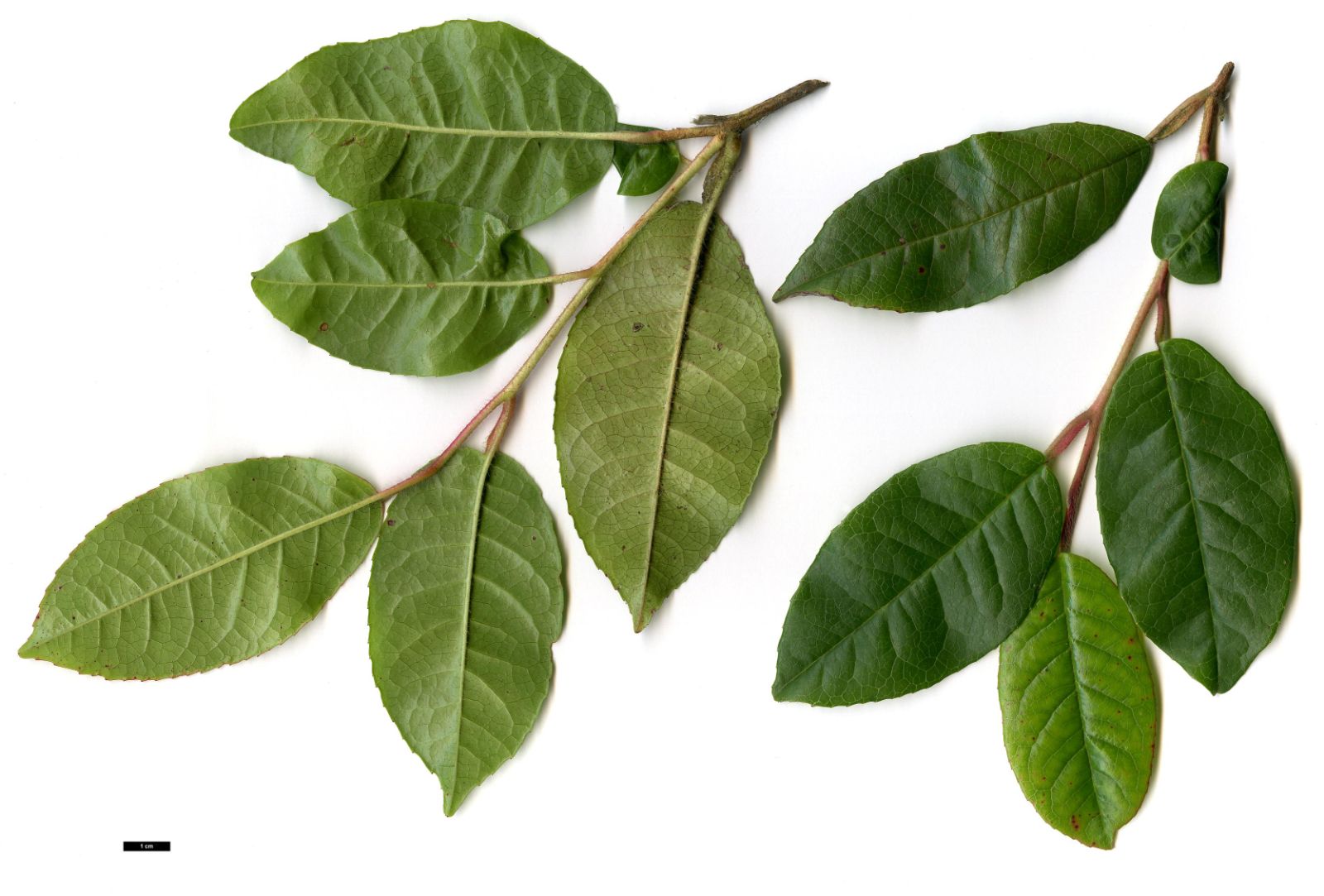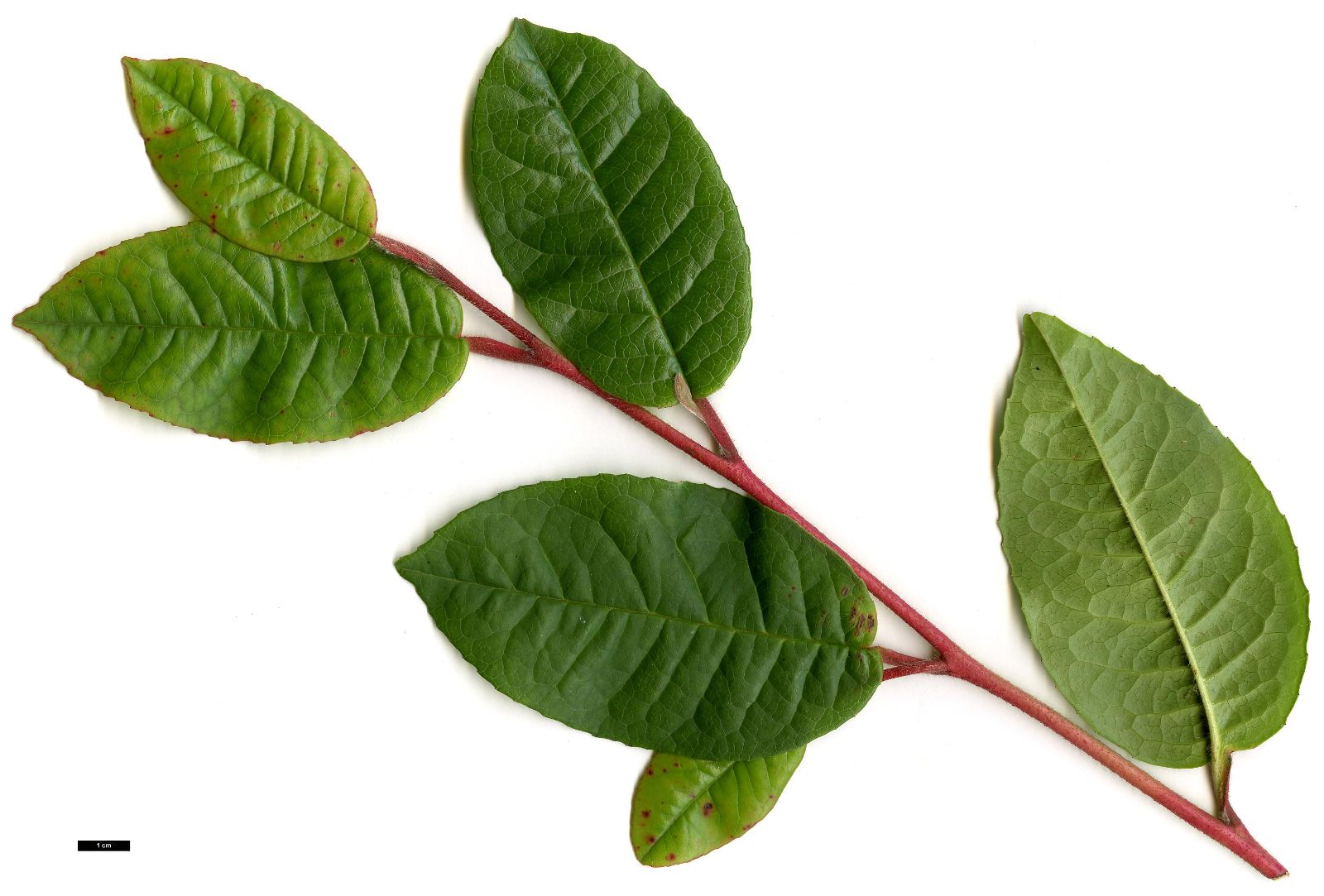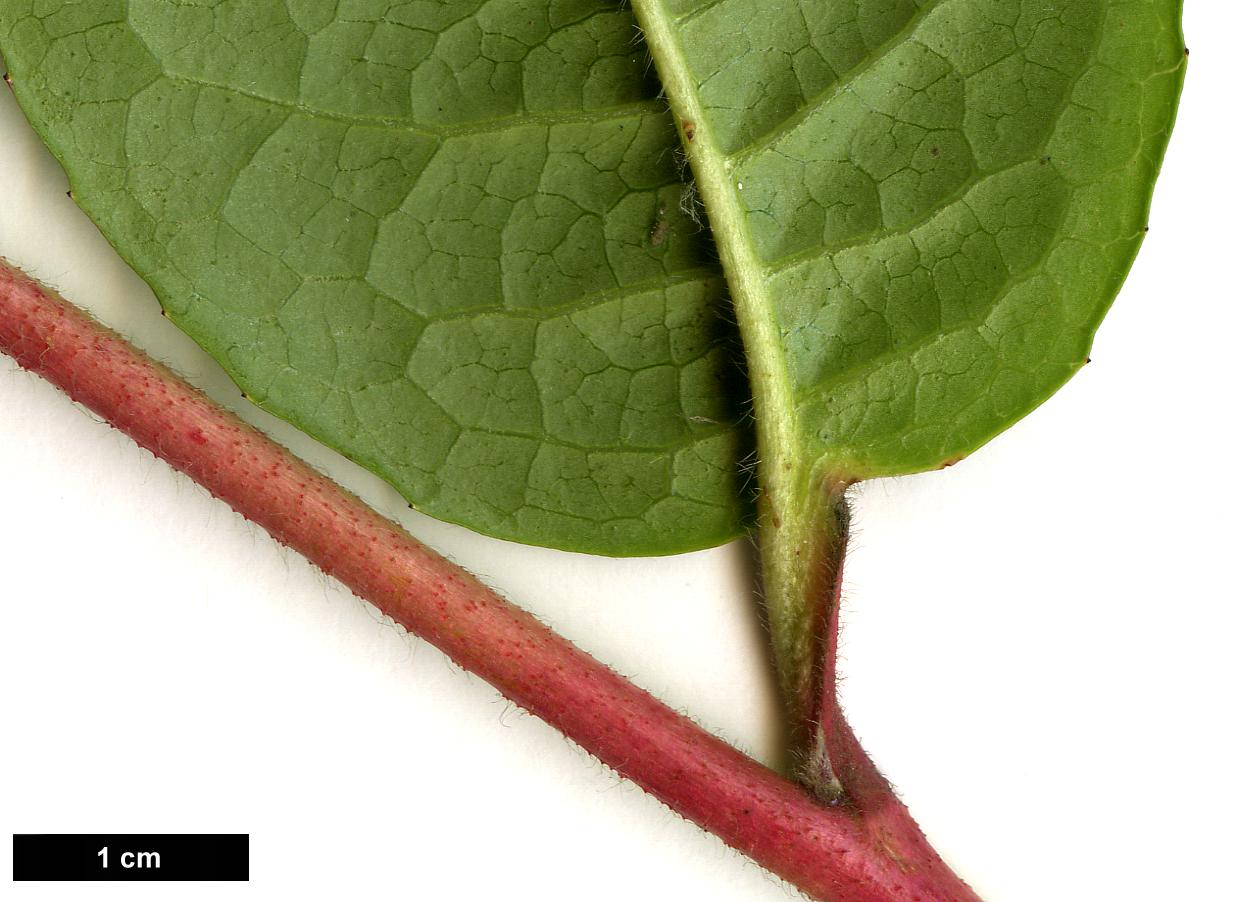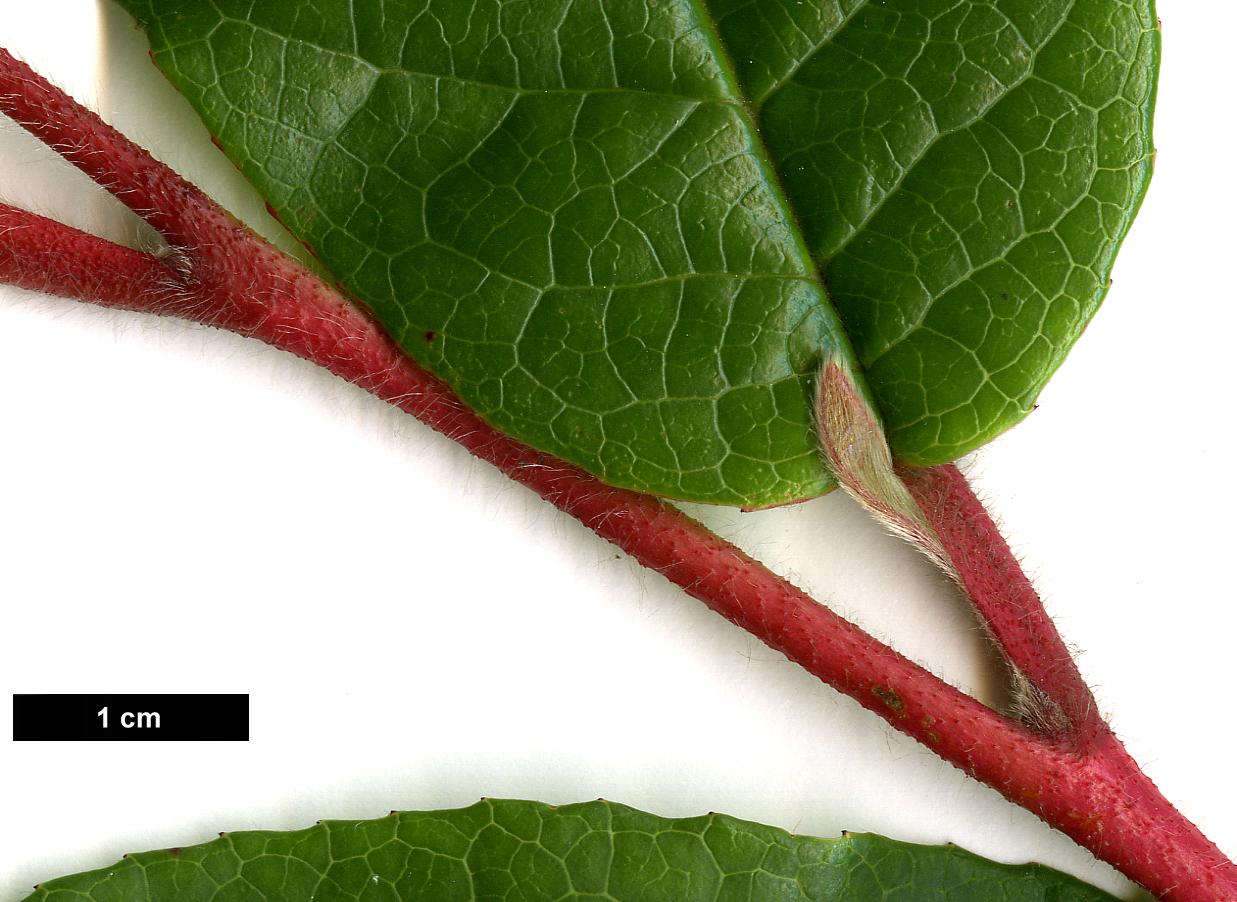Stewartia pteropetiolata
Sponsor
Kindly sponsored by a member of the International Dendrology Society.
Credits
John Grimshaw (2016)
Recommended citation
Grimshaw, J. (2016), 'Stewartia pteropetiolata' from the website Trees and Shrubs Online (treesandshrubsonline.
Genus
Synonyms
- Hartia sinensis Dunn (not Stewartia sinensis Rehder & Wilson)
- Hartia serratisepala Hu.
Evergreen tree, 6–15 m. Bark dull grey brown, finely fissured; twigs greyish-yellow to red-flushed, pubescent in first year, becoming purplish and glabrous in second year. Leaves 6–10(–13) × 2.5–4.5(–5) cm, leathery, elliptic to oblong, upper surface glossy green, glabrous, lower surface paler, sparsely pubescent or glabrescent, with longer hairs on the midrib, 10–12 pairs of veins, prominent above, impressed below, margin serrate, apex abruptly acute to shortly acuminate, base rounded; petiole 1–1.5 cm, grey-pubescent, with wings c. 3 mm wide. Flowers solitary; pedicel 8–10 mm, appressed pubescent; bracteoles persistent, elliptic, 5–7.5 × 3–3.5 mm, appressed pubescent; sepals 1–1.5 × 0.7–1 cm, long-ovate with apex acute, margins serrulate, purplish-red, with silky white hairs on both surfaces; corolla c. 3 cm across, white, lobes 1.5–1.8 × 1–1.3 cm, broadly obovate to suborbicular, apex rounded, white silky at the base on the outer surface; filaments fused at their base, 7–9 mm; style c. 5 mm; capsule long-ovoid, with acute point c. 5 mm long; seeds narrowly winged. Flowering April–May (China). (Ming & Bartholomew 2007).
Distribution China Yunnan Vietnam N
Habitat Forests, 1200–2600 m asl.
USDA Hardiness Zone 9-10
RHS Hardiness Rating H3
Conservation status Not evaluated (NE)
Bean recorded that Stewartia pteropetiolata was discovered by Augustine Henry and introduced by Forrest from western Yunnan in 1912: ‘the leaves, Forrest remarked, were used locally for making tea.’ A subsequent introduction (F 24406) from the Shweli-Salween divide at 2400–2700 m seems to have been the source for a group of trees at Caerhays Castle, of which one 10 m specimen still survives (Johnson 2011), though Bean recorded five up to 17.5 m. It is very tender and unsuitable for most parts of our area, but it flourishes at Villa Taranto, Italy and the Royal Tasmanian Botanical Gardens, Hobart (Hsu, Boland & Camelbeke 2008). A young specimen of Vietnamese origin was recorded to be then thriving in the University of British Columbia Botanical Garden in 2008, but that and other Vietnamese specimens have not survived (D. Justice pers. comm. 2016); however, individuals at Piroche Plants, British Columbia survived –6°C in the 2015–16 winter (pers. comm. via D. Justice 2016). The creamy-white flowers are on the small side and are somewhat obscure below the foliage but turn yellow as they fall, and are then rather attractive as they lie on the ground (T. Hudson pers. comm. 2016). They can be followed by attractive red fruits (Hsu, Boland & Camelbeke 2008); the red tinge is also picked up in the red new shoots and winged petioles.


